The written word is glorified in Islam, and at its summit is the Qur’an. Venerated as the word of God, this creates a huge responsibility for those who commit it to writing. The earliest existing examples of Arabic calligraphy are from the Qur’an, inscribed in a script that has come to be called Kufic. This evolved into an abundance of different scripts that give Arabic its rich artistic diversity. Scribes were honoured members of Islamic societies, and rulers were also prone to displaying their calligraphic prowess. This encompassed more than sacred texts. Poetry and scholarship were also given enormous respect, and sought after for reasons other than their appearance. Despite this, the emphasis on penmanship kept the level of artistry high. The printed word never acquired the same status in the Islamic world.

The oldest fragments of the Qur’an are from the 8th century. Their origins are usually unclear, but they are usually attributed to North Africa or the Middle East. The power of their simplicity is self-evident. From around the 11th century onwards, paper took over from the original vellum. Decoration went from the minimalism of early Kufic to later examples adorned with enough gold and colour to overwhelm the words completely. The degree of ornamentation was generally dictated by a patron’s budget and geographical location. While India, Persia and the Ottoman Empire placed a high value on embellishment, at the western end of the Islamic world, some of the original starkness remained.
The Qur’an was supplemented by other works with a religious theme. Books of hadith and prayers, genealogies of the Prophet Muhammad, and treatises on Islamic law were important genres. These were occasionally illuminated with views of the Holy Cities and written in indigenous languages. In Southeast Asia these included Malay, Javanese and Buginese. Elsewhere it was Persian, Turkish and Urdu that predominated.
Illumination was rare on works of science and philosophy. The Islamic world’s contribution in these areas was valued universally for its substance rather than its appearance. Works of astronomy, mathematics and medicine looked less spectacular than religious texts but they led the world in scholarship, ending up in libraries throughout the known world of that time. Although few of these fundamental works remain in their original form, the tradition of making copies by hand has ensured the survival of later versions.

A quite different tradition existed in the form of miniature paintings. Figural art continued to thrive in some Islamic lands, long after their incorporation into Islam. The epics of Persian literature depended heavily on the art of the painter to convey their message of love and heroism. For most manuscripts, however, it is a combination of the written word and non-figural details that raises them to the sublime. From the profundity of a poem to the more formal requirements of a marriage certificate, calligraphy lends a visual dimension which is clear to those who cannot read a single word of their contents.














